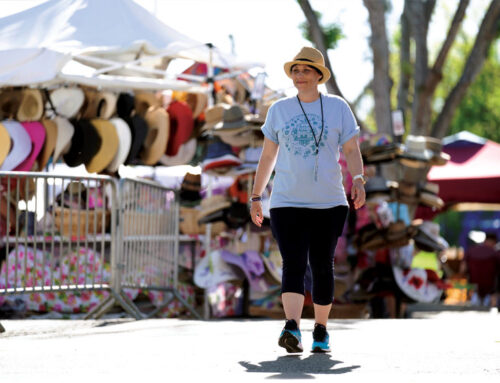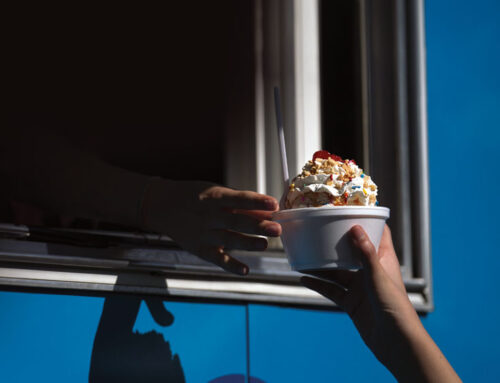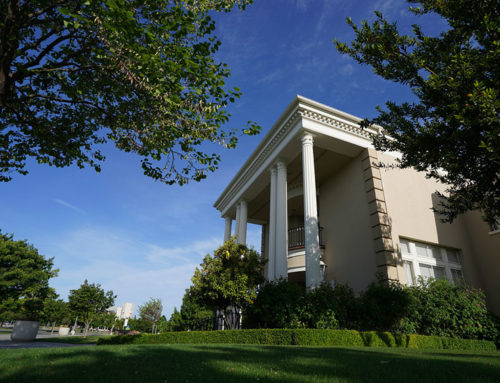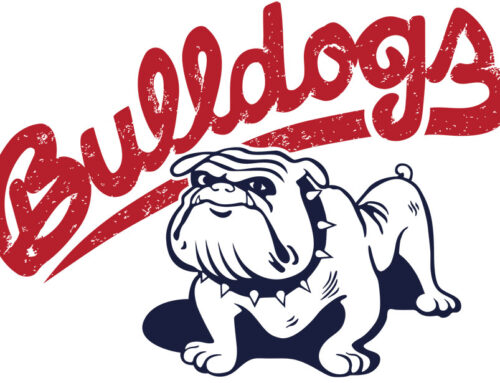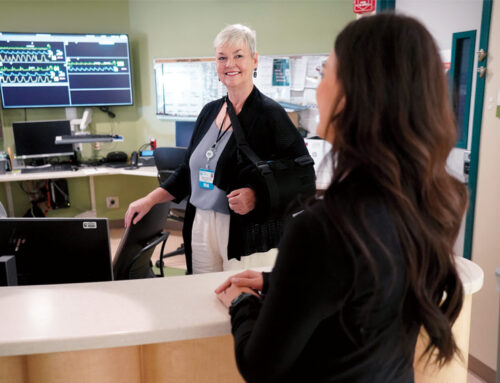Flat Flip Flies Straight
Fresno State alumnus builds career on disc golf
By Charles Radke (’96)
Photos by Cary Edmondson (’03)
Ask George Sappenfield to talk about the evolution of the Frisbee and he’ll talk about pie tins. That’s right: pie tins, the original Frisbees, before the Frisbee was actually a thing. Seems the delivery drivers from Mother Frisbie’s (with an “i”) Pie Company in Bridgeport, Connecticut, used to pass the time between stops by flipping pie tins to one another, Frisbee style.
“There was a lot of playing catch with pie tins,” Sappenfield says.
Since the tins were imprinted on the bottom with the words “Frisbie’s Pie Company,” those drivers used to say they were “playing Frisbie.”
Toymaker Wham-O came along in the late 1950s and changed the name to Frisbee (with an “e”) “to avoid any legal troubles,” Sappenfield says, and the Frisbee as we know it today was born.
Sappenfield, a 1967 Fresno State graduate and assistant professor from 1972-78 (he taught a one-unit class on Frisbee), built his life and career on the product. More specifically, he built his career on Frisbee disc golf, the sport he helped invent at Fresno’s Quigley Playground on a Saturday in 1965.
At the time, Sappenfield was a recreation administration major whose part-time job it was to plan activities at area parks and play Frisbee or kickball or any number of “park-like games” to keep the kids entertained.
A professor challenged Sappenfield and his classmates to use the entire playground, “all the land and equipment there,” otherwise it was a waste of taxpayer money.
This idea stuck with Sappenfield, and one afternoon while playing “ball golf’’ with friends at Fresno’s Riverside Golf Course, he was struck with an idea.
“I saw this vision in front of me of a vertical Hula Hoop with a Frisbee flying through it,” he says.
The next morning, a Saturday, he went to work at Quigley Playground. He lashed wooden posts to Hula Hoops, pounded the posts into the ground so the Hula Hoops were vertical, and lo-and-behold, in a matter of minutes, he had a four-hole disc golf course. The kids loved flipping the Frisbee through the floating “holes” he’d created.
Until that Saturday in 1965, “no one had ever played actual Frisbee golf on a non-existing object course,” he says. “Of course, the sport is very sophisticated now.”
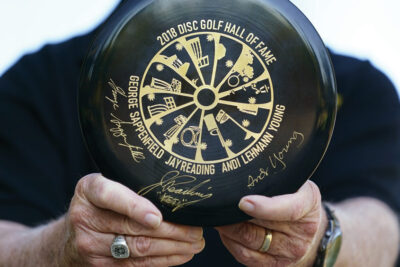
A 1967 Fresno State graduate, George Sappenfield was an assistant professor at the university from 1972-78, teaching a one-unit class on Frisbee. Sappenfield was elected into the Disc Golf Hall of Fame in 2018. There are now more than 13,000 certified disc golf courses in the world, including one named for him in Yadkinville, North Carolina near his current home.
It’s so sophisticated, in fact, that Frisbee golf discs today, much like golf clubs, have different functions. There’s distance drivers, fairway drivers, mid-range discs and putters, he says. Gone is the Hula Hoop, replaced by the chain basket or “pole hole” (invented in 1976) that now “catches” the flying discs (invented in the 1980s).
There’s a throwing technique: flat flip flies straight, the directions printed on the underside of the original Frisbee. There’s a governing body, the Professional Disc Golf Association (PDGA), with over 200,000 members. There’s a Disc Golf Hall of Fame, into which Sappenfield was elected in 2018. And there are more than 13,000 certified disc golf courses all over the world, including one in Yadkinville, North Carolina near his current home — named for Sappenfield himself.
In fact, there’s a disc golf course on every continent, including Antarctica. “I don’t know that I’d want to play that one,” he says.
All of this from a rudimentary course put up at Quigley Playground in Fresno on a Saturday in 1965.
Sappenfield’s roots in Fresno run deep. He was born in Lindsay, and his family moved to Fresno when George was just 5 months old. He grew up attending Fremont Elementary, Hamilton Junior High and Fresno High School.
One of his best friends growing up was Tom Seaver, with whom he played baseball in the neighborhood streets, in youth leagues and on school teams. As teens, they also played Frisbee, but Seaver didn’t care for it.
“We were friends our entire lives,” Sappenfield says. One of the highlights of Sappenfield’s life was attending Seaver’s Hall of Fame induction ceremony in 1992.
After his college days at Fresno State, Sappenfield went on to get a master’s degree, then a doctorate in commercial recreation, which he called “the business side of fun.” Over the years, Sappenfield has worked for Wham-O, Fresno State and as a professor at East Carolina University.
One of the things he is proudest of, however, was his time with the Special Olympics. Working with Eunice Kennedy Shriver, who hired him as her western states liaison, Sappenfield got Frisbee disc sanctioned as an official Special Olympics sport.
“Disc golf is such an enjoyment for me,” Sappenfield says. “I didn’t start out thinking I was going to create this game that was going to be worldwide. So it does my heart a lot of good to watch people enjoy it.”
Sappenfield is now retired and spends his time volunteering and playing disc golf, of course, in and around his home in Jonesville, North Carolina.
Top Photo: Alumnus George Sappenfield built his career on Frisbee disc golf, the sport he helped invent at Fresno’s Quigley Playground in 1965.


